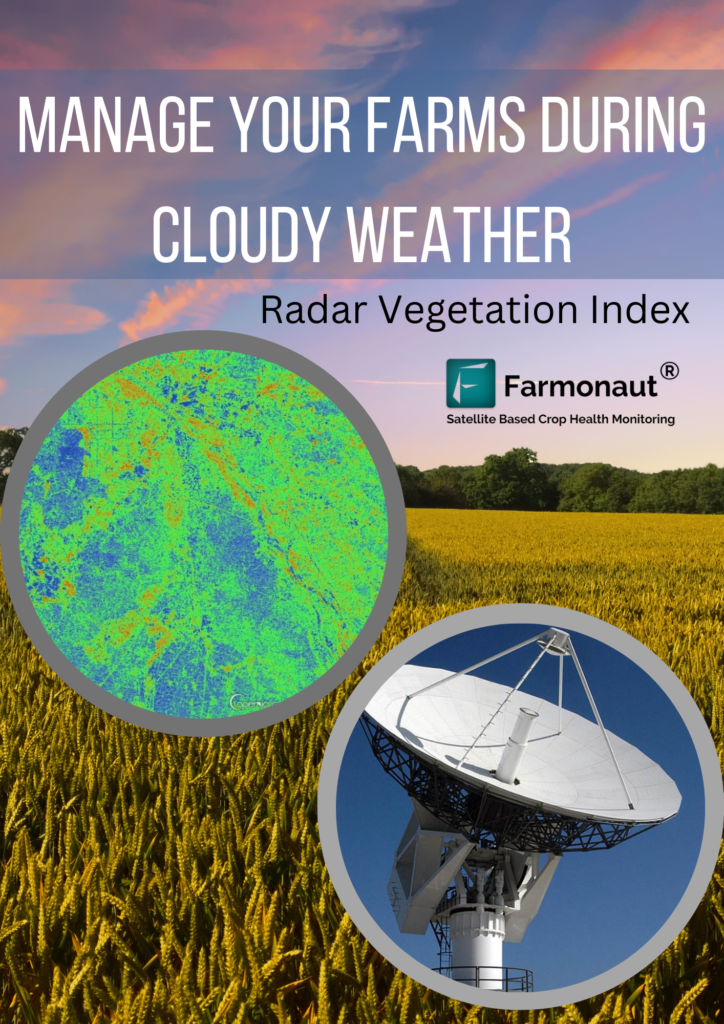PFAS Soil Treatment: 5 Powerful Strategies for Safer Farms
“Over 98% of Americans have detectable PFAS levels, highlighting the urgent need for soil remediation in agriculture.”

Understanding PFAS: The Persistent Challenge in Agriculture
PFAS, or per- and polyfluoroalkyl substances, have become an alarming environmental concern in modern farming and forestry practices worldwide. These human-made chemicals are often referred to as “forever chemicals” due to their remarkable chemical stability and resistance to degradation. They belong to a complex group of compounds characterized by powerful carbon-fluorine (C–F) bonds, which are among the strongest in organic chemistry, making them exceptionally persistent in nature.
Over decades, PFAS contamination in agricultural soils has become widespread, reaching regions untouched by direct PFAS usage through mechanisms like atmospheric deposition and water flow. Their presence in our soils, crops, water resources, and even food supply is now a significant risk both to the environment and to human health due to their bioaccumulative nature.
Before we explore the most effective PFAS remediation methods for soil treatment, it’s crucial we understand their sources, impacts, and why sustainable solutions are urgently needed for safer farms.
Sources of PFAS Contamination in Agricultural Soils
PFAS can infiltrate agricultural soils through a variety of pathways, often unintentionally. Understanding these sources is vital for identifying risk areas and planning effective remediation strategies.
1. Biosolids Application
- Historically, biosolids—treated sewage sludge from wastewater treatment plants—have been used as rich fertilizers in agriculture.
- Many biosolids contain PFAS, which can accumulate in soils over time and enter the food chain.
- Even sites in Connecticut, USA, have been found with elevated PFAS due to such application practices (source).
2. Firefighting Foams
- PFAS-containing firefighting foams (AFFF: Aqueous Film-Forming Foams) have been widely used for fire suppression, especially near airports, military bases, and chemical plants.
- Accidental releases, test events, and disposal of these foams can directly contaminate soils and water resources near agricultural areas.
3. Atmospheric Deposition and Precipitation
- PFAS can be transported in the atmosphere and later deposited onto land via precipitation (rain, snow, dust), spreading contamination to areas with no direct PFAS use.
- This indirect pathway is responsible for widespread PFAS contamination in agricultural soils, sometimes far from industrial or urban PFAS sources.
4. Other Pathways
- Industrial discharge and landfill leachate can introduce additional PFAS into nearby soils and water.
- Contaminated irrigation water or sediment, pesticide additives, and improper disposal of consumer goods are also suspected contributors.
Recognizing these sources helps us target treatment methods more effectively and plan for long-term preventive strategies in agriculture.
Health and Environmental Risks of PFAS Exposure
The health risks of PFAS exposure are serious and multifaceted, raising global concern, especially in farming communities relying on agricultural soils and groundwater for food production.
Human Health Risks Posed by PFAS
- Bioaccumulative effects: PFAS compounds persist in the body, with exposure leading to gradual accumulation in tissues.
-
Linked issues include:
- Reduced immune response
- Increased cholesterol levels
- Hormone changes, endocrine disruption
- Thyroid problems and metabolism disorders
- Pregnancy complications
- Neurodevelopmental effects in children
- Possible increased risk of certain cancers
- Almost all Americans have measurable PFAS in their blood, primarily due to contaminated water or food (source).
Environmental Impact of PFAS in Soil and Water
- PFAS leaching affects water quality, often contaminating groundwater and therefore drinking water sources.
- Aquatic ecosystems are at risk, as PFAS can bioaccumulate up the food chain, affecting wildlife and ultimately human health.
- Conventional soil and water management practices often fail to remove or degrade PFAS effectively, necessitating innovation in remediation technologies.
In summary, the persistence and bioaccumulative nature of PFAS pose significant, long-term health and environmental risks. These challenges demand urgent attention from scientists, regulators, and the broader agricultural community.
PFAS in Soil and Water: Environmental Impact and Challenges
The ubiquity of PFAS in soil and water exemplifies the enormous challenge facing agriculture and sustainable land management. These substances frequently leach from soils into surface water and groundwater, propagating contamination far from the original source and hampering remediation efforts.
Why Are PFAS Such a Problem in the Environment?
- Chemical stability: PFAS resist natural degradation due to their strong carbon-fluorine bonds.
- Mobility: Many PFAS are water-soluble and can migrate through soil into aquifers or rivers.
- Bioaccumulation: Once released, PFAS can persistently build up in plants, animals, and humans, increasing risks with time.
- Widespread contamination: Atmospheric transport and deposition mean even isolated or rural farmland isn’t immune.
This combination of stability, mobility, and bioaccumulation makes PFAS environmental impact a multi-generational issue. Addressing it calls for innovative, science-backed, and regionally adaptable soil treatment and remediation strategies.
PFAS Soil Treatment: 5 Powerful Remediation Strategies
“Phytoremediation can reduce PFAS soil concentrations by up to 60%, making it a powerful sustainable farming strategy.”
Given the chemical persistence and varied sources of PFAS, addressing PFAS contamination in agricultural soils is neither simple nor one-size-fits-all. A multifaceted approach—tailored to site conditions, regulatory standards, and available resources—is key. We will now explore the 5 most effective PFAS remediation methods and soil treatments, balancing practicality, cost, environmental safety, and farm-scale suitability.
1. Soil Amendments: Biochar and Activated Carbon
- Soil amendment for PFAS involves incorporating materials like biochar (charred biomass) or activated carbon into agricultural soils.
- Their high surface area and porosity can immobilize PFAS, reducing their bioavailability and uptake by plants.
- This method does not degrade PFAS but limits their movement, making it a good interim solution for farming and forestry seeking immediate risk reduction.
- Often combined with ongoing monitoring and eventual removal strategies.
Explore more about tracking agricultural carbon with Farmonaut’s Carbon Footprinting platform, which helps farmers measure and manage their environmental impact and supports sustainable land management goals.
2. Phytoremediation: Using Plants to Remove PFAS
- Phytoremediation of PFAS harnesses specific plant species to extract PFAS from soil.
- Plants take up PFAS from soils; their above-ground biomass is subsequently harvested and disposed of safely.
- Species selection and soil conditions influence effectiveness—grasses and deep-rooted plants are often studied for this role.
- Research suggests reductions up to 60% are possible with sustained phytoremediation (source).
- This is a low-cost, sustainable strategy and aligns closely with regenerative agriculture principles.
3. Soil Washing: Water- or Solution-Based Removal
- Soil washing is a technique that involves removing PFAS from soil by flushing with water or specialized chemical solutions.
- The process pulls PFAS into the wash water, which is then captured for additional off-site treatment or safe disposal.
- Its effectiveness is highly influenced by soil composition and particle size.
- Limitations: Washing is typically best suited to soils with low clay content and poses the challenge of treating secondary contaminated water streams (source).
Interested in satellite monitoring of your soil and water status? Farmonaut’s Large-Scale Farm Management system supports efficient resource allocation and environmental stewardship across vast agricultural enterprises.
4. Thermal Treatment: High-Temperature Destruction of PFAS
- Thermal treatment exposes contaminated soils to high temperatures, directly destroying PFAS compounds.
- Incineration (>~700°C) converts PFAS into smaller, less harmful molecules such as carbon dioxide and fluoride ions.
- Pros: Very effective at eliminating PFAS when conditions are tightly controlled.
- Cons: Energy-intensive, expensive, and not suitable for all soil types or large areas (source).
- Best reserved for “hot spots” or small, highly contaminated zones.
5. PFAS Regulatory Standards: Compliance & Prevention
- Regulatory measures now play an increasingly vital role in addressing PFAS contamination in agricultural soils.
- The U.S. EPA’s National Primary Drinking Water Regulation (NPDWR) has set enforceable Maximum Contaminant Levels (MCLs) for six key PFAS chemicals.
- Compliance with new standards is being phased in, impacting soil monitoring, water testing, and acceptable target values for PFAS removal (source).
- Strategic planning: Farmers, land managers, and policymakers must collaborate to ensure monitoring, reporting, and best-practice implementation meet evolving regulatory frameworks.
Farmonaut’s data-driven solutions are perfectly suited to help Traceability in food supply chains, ensuring regulatory compliance and building consumer trust through blockchain-based transparency.

Comparison Table: PFAS Remediation Strategies
| Remediation Strategy | Estimated PFAS Reduction (%) | Approximate Cost per Acre | Implementation Timeframe | Environmental Impact | Recommended Farm Type |
|---|---|---|---|---|---|
| Soil Washing | 60-90% | $1,200–$3,000 | 2–4 weeks | Potential water waste; needs effluent management | Medium–large, where soils/types permit |
| Phytoremediation | 20-60% | $250–$800 | Multiple growing seasons | Low; sustainable if managed correctly | Small to large, especially in low-resource areas |
| Activated Carbon Amendment (incl. biochar) | 40-70% (immobilization) | $500–$1,500 | 1–2 weeks | Minimal, but not a destruction method | All sizes; especially for interim risk management |
| Thermal Treatment | 90-99% (destruction) | $5,000–$10,000 | Several days (per batch) | High energy use; possible emissions | Small, heavily contaminated areas |
| Electrochemical Oxidation | Up to 95% (in solution) | $1,500–$3,500 | 2–3 weeks | Some byproducts; needs expert oversight | Specialized/small scale or as part of combined approach |
Each remediation method has trade-offs regarding cost, speed, and environmental impact. In many cases, a combination of techniques, paired with ongoing monitoring, provides the best results for PFAS removal and sustainable farm management.
Farmonaut: Empowering Sustainable & Precise Agriculture
Reliably identifying, monitoring, and addressing PFAS contamination in agricultural soils calls for advanced technology and actionable data. This is where platforms like Farmonaut are revolutionary in the domain of sustainable agriculture.
How Farmonaut Supports Safer, More Sustainable Farms
- Satellite-Based Crop & Soil Monitoring: Near-real-time insights on soil moisture, crop health, and vegetation indices (like NDVI) allow us to make targeted interventions for remediation and resource management.
- Jeevn AI Advisory: Personalized, AI-driven advice—integrating satellite data, weather, and crop-specific analytics—empowers farmers to optimize inputs, reduce chemical usage, and respond proactively to environmental risks.
- Blockchain Traceability: Enhances transparency and compliance, especially for regulatory reporting and food export standards affected by PFAS soil and water contamination.
- Carbon Footprinting & Sustainability Monitoring: Track, compare, and reduce farm emissions—a vital step for qualifying for green finance and regulatory incentives.
- Fleet and Resource Management: Ensure efficient logistics and minimize unnecessary soil disturbance or potential spread of contaminants across fields.
Farmonaut’s platform is available as a Web App, Android App, and iOS App, and can also be accessed via API (API Access, API Developer Docs). This ensures flexibility and scalability for individual farms, agribusinesses, and large-scale government programs.
Farmonaut Fleet Management helps agribusinesses optimize their machinery usage, reduce operational costs, and track logistics to prevent unnecessary disturbance or spread of soil-bound contaminants.
Crop Loan and Insurance Solution leverages satellite data for verification, supporting access to financing and risk mitigation—crucial for farms affected by environmental contamination.
Farmonaut democratizes access to precision agriculture, empowering stakeholders worldwide to make informed decisions, protect environmental quality, and sustain food security in the face of PFAS risks.
Farmonaut Subscription Options
Challenges and Considerations in PFAS Remediation
While the strategies for removing PFAS from soil continue to advance, several challenges and contextual factors must be carefully weighed for successful long-term soil remediation and sustainable agricultural practices:
-
Persistence and Stability of PFAS:
- PFAS compounds resist breakdown, so physical removal or immobilization is often required.
- Some advanced destruction or transformation methods (such as electrochemical oxidation or high-temperature incineration) may be prohibitively expensive for many farms.
-
Economic Constraints:
- Implementing the latest PFAS remediation methods is often costly, especially for small and medium-sized agricultural enterprises.
- Availability of market incentives, subsidies, or cost-sharing schemes may be necessary for wide-scale adoption.
-
Monitoring & Regulatory Uncertainties:
- Regulatory standards (PFAS regulatory standards) are evolving, with some regions having strict PFAS limits in drinking water, food, and soil, while others are lagging behind.
- Frequent testing and reporting may require investment in lab services and digital traceability solutions.
-
Resource Efficiency & Environmental Impact:
- Some methods cause secondary pollution or require safe disposal of concentrated PFAS waste.
- Sustainable, holistic management is essential to prevent unintended harm.
-
Adoption Barriers:
- Knowledge transfer, farmer training, and public awareness of PFAS risks are still works in progress.
Our collective efforts—combining innovative technology, regional expertise, regulation, and farmer empowerment—are central to making our food systems safer and more resilient.
FAQs about PFAS Soil Treatment
-
What are PFAS and why are they called “forever chemicals”?
PFAS stands for per- and polyfluoroalkyl substances, a large group of human-made chemicals distinguished by their carbon-fluorine bonds. This bond makes them extremely resistant to degradation, so they persist in the environment and living organisms for years, earning the nickname “forever chemicals.” -
How do PFAS get into agricultural soils?
PFAS can infiltrate soils through biosolids application, use of firefighting foams, atmospheric deposition, contaminated irrigation water, and runoff from industrial sites. -
What health risks are linked to PFAS exposure through soil?
PFAS exposure can lead to reduced immune response, high cholesterol, hormone changes, thyroid problems, pregnancy complications, and more. In agricultural contexts, crops can take up PFAS from contaminated soils and transfer it to humans via the food chain. -
Can plants be used to remove PFAS from soil?
Yes. Phytoremediation of PFAS—using certain plant species to extract contaminants—can reduce PFAS soil concentrations by up to 60% over several growing cycles. -
How do regulatory standards control PFAS risks in agriculture?
Agencies like the U.S. EPA set maximum contaminant levels for PFAS in water and food, requiring routine testing, reporting, and the adoption of remediation methods where standards are exceeded. -
How can Farmonaut help with sustainable PFAS management?
Farmonaut offers real-time satellite-based monitoring, AI advisories, carbon and sustainability tracking, and supply chain traceability—providing data-driven support for safer and more compliant farm operations.
Conclusion: The Path to Sustainable, Safer Farms
PFAS contamination in agricultural soils stands as one of this century’s most complex sustainability and public health challenges. Its chemical persistence, bioaccumulative nature, and widespread presence necessitate coordinated action from the entire agri-food ecosystem.
By combining science-driven PFAS remediation strategies—like soil amendments, phytoremediation, soil washing, thermal treatment, and rigorous regulatory compliance—with advanced tools such as Farmonaut’s satellite and AI-powered insights, we stand a real chance of protecting our soils, food systems, and communities for generations to come.
Precision agriculture platforms not only help us monitor PFAS risks and track remediation progress, but also empower us to minimize chemical use, optimize resources, and advance the cause of sustainable, safe, and effective farming worldwide.
As PFAS regulatory standards and best-practice guidelines evolve, it’s imperative that farmers, policymakers, and solution providers work hand in hand—leveraging technology, ongoing education, and regional adaptation—to deliver on the promise of safer, resilient, and future-proof agriculture.
Access Farmonaut’s suite of monitoring and management solutions to make your farm safer, more efficient, and future-ready.



Let’s work together—combining innovation, tradition, and commitment—to successfully address PFAS contamination in agricultural soils and create a safer, thriving environment for all.













